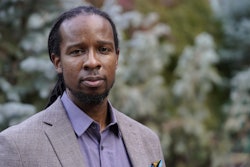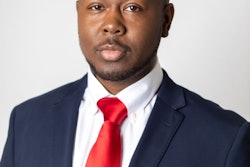Despite a court order, achieving racial parity still appears a long way off
When George Munchus came to the University of Alabama at Birmingham
in 1976, he was the only Black professor in the business department,
and one of just a few at the university.
“Given the history of White supremacy in the state of Alabama, most
people had little to no exposure to Black scholars,” he says.
For 20 years, despite his appeals to the institution’s senior
administrators, he says he remained the lone African American professor
there.
In 1996, the university hired another African American professor in
the business department. And two years later that department still has
just two Black professors.
Institution-wide the picture doesn’t get any prettier. In a city
nearly three-quarters Black, 4 percent of the university’s full-time
faculty members are African American. Black administrators are at just
9 percent.
UAB has the largest Black faculty of the traditionally White
institutions in the state. Looking at the totals for all the TWIs in
Alabama, as of last fall, Blacks constituted 4.2 percent of nearly
6,000 full-time faculty members. That same year, Blacks constituted
merely 6.4 percent of all administrators at the state’s colleges and
universities.
And this was six years after a remedial decree in Knight v. Alabama
mandated that many of the state’s universities beef up their Black
faculty and administrative staff in order to remove vestiges of
discrimination.
Judge Harold Murphy, the presiding judge in the case notes in the
decree that “Black students at majority White colleges and universities
benefit on many levels from the presence of Black faculty and
administrators.”
He also came to the conclusion that Black students at historically
Black universities (HBCUs) could also benefit from adequate facilities,
endowments, and the like. So, he ordered the state to pay for more
facilities and endowments at Alabama State University (ASU) and Alabama
A&M University (A&M).
Half a decade later and nearly 30 years after the official end of
de jure segregation, the state of Alabama is still struggling to level
educational opportunities for its Black and White citizens. And critics
say that such a goal will be difficult to reach unless the state
recruits and retains more Black faculty. Only recently, because of the
decree, are state Black institutions getting the resources that White
institutions have taken for granted.
The second part in a series of two, this article concludes a look
at the impact the past three decades of struggle in Alabama have had on
African American students, faculty and administrators in the state’s
higher education community.
Faculty and Administration
In a September petition to Judge Murphy, James Blacksher the
attorney for the plaintiffs in Knight v. Alabama writes that “UAB
should explain why it has fewer tenured and tenure-track Black faculty,
than do similarly sized universities” in a host of other cities with
similar Black populations.
“I think the primary problem of under-representation of Blacks on
White campuses is the way they do business,” Blacksher says. “The
hiring decisions are not made by the presidents or the vice presidents,
who are essentially accountable for diversifying the university. The
decisions are made by the deans.”
But the president of the university, Dr. Ann Reynolds, disagrees
noting that her school’s Black faculty percentages are above the
national average.
“We’ve got a very active minority faculty recruitment procedure,”
she says. Reynolds also insists that UAB’s “African American faculty is
much cherished. They are treated absolutely as they should be.”
And indeed, Judge Murphy remarked in his 1991 decree that “the
Comprehensive Minority Faculty Development Program at UAB serves as a
model for other programs around the country. But the annual report the
university submitted to the court shows the funds for the program have
been reduced significantly.
And Munchus, one of the university’s longest standing Black faculty members, tells another story.
“It’s been a very, very, very challenging 22 years at best,” he
says. “Reynolds is still somewhat naive as it relates to what goes on
in the departments. That’s where Black faculty catch hell. She has yet
to do the dirty work.”
Munchus says that during his tenure at the university, there’s been
“no rebel flag waving, and I’ve never been called the `n’ word.” But he
says it’s a constant battle to get university officials to understand
the significance of having no Black academic deans and few Black
department chairs.
One thing he does admit, though, is that he’d be even lonelier
across the state at Auburn University, where James Brown, vice
president for minority affairs, says that recruiting for Black faculty
“has become a bidding war.”
With 27 full-time Black faculty members, less than 3 percent of
Auburn University’s faculty is African American, a fact that Brown
attributes to the national scarcity of African American Ph.D.s.
But Blacksher again retorts, “There are plenty of Black Ph.D.s. The
problem is that once they’re recruited, they’re not retained.”
Of Auburn, Blacksher notes in his September petition that “three
Black faculty members have resigned in the last few months because of
lack of support for their tenure and promotion opportunities.”
And, Auburn still has the second lowest Black faculty percentage of
all the state-funded institutions. The institution has no Black deans
or department heads. And roughly 4 percent of its administrators are
Black.
“There’s a real culture clash here,” says Blacksher. “Until the
culture changes where Blacks are included as a big part, Black faculty
will never be retained in any real numbers.
“The lack of Black faculty means fewer mentors for Black Ph.D.s,”
he adds. “Fewer mentors will essentially mean fewer Black Ph.D.s, and
fewer Black Ph.D.s will mean fewer Black faculty.”
What the HBCUs Will Get
A casual glance at the campuses of historically Black Alabama State
University and Alabama A&M University reveals decaying buildings
and dilapidated facilities that don’t exist at the state’s other
colleges and universities.
“When I first came here, the building tight behind my office had a
gutter so unkempt that pigeons used to check in and out of it like it
was a hotel,” remembers Bill Harris, president of Alabama State
University.
Now thanks to the remedial decree, the two schools will get capitol
improvement funds — $15 million to Alabama State and $16 million to
A&M — to spruce up their physical plants.
They’ll also get an endowment — $1 million annually for the next
15 years — and the state is required to match contributions of up to
$1 million to each endowment.
“The fact of the matter is that for so many years, there was an
inequity in the distribution of funds in this state. And the situation
got so far out of hand that there are literally decades [to] make-up,”
says Harris.
That inequity, some say, may never even out. Especially, says state
finance director Jimmy Baker, because Alabama is slowly moving towards
a performance funding model. Under such a plan, state resources are
allocated to schools on the basis of an institution’s ability to meet
certain performance standards.
Although it is not yet a significant portion of each school’s state appropriations, performance funding is in the mix.
“Funding for the historically Black institutions is not even equal
now and I don’t anticipate it ever being equal,” Baker says.
“Particularly once you factor in performance funding.”
One part of the Murphy decision that no other state desegregation
case covers is an expansion of A&M’s land-grant status. The decree
calls for one unified system, so Auburn — the state’s other land-grant
school — will combine efforts with A&M.
Dr. John T. Gibson, president of Alabama A&M says the merger
will help his school do a better job of reaching out to farmers that
have traditionally gotten little to no state backing.
“A&M will develop the urban and non-traditional program,” says
Gibson. “It will be our job to ensure that the limited-resource farmers
always have support.”
Blacksher says the mandate will level out years of gross state neglect.
“A&M never got any state money to carry out its land-grant
functions until it brought on the lawsuit,” he says. “Auburn, on the
other hand, was getting in the neighborhood of $40 million dollars a
year for agricultural extension and research.” Calls made to verify
this claim with A&M were not returned.
The Future
With only a few items left to hash out in the plaintiffs’ case
against the state, higher education officials in Alabama must now go
about implementing Judge Murphy’s decree. While some schools may be
moving slower than others in their recruitment and retention of Black
students, faculty, and administrators, there’s been no official state
resistance.
“I think that the state has churned out, without extraordinary
grumbling, the requirements of the court,” says Harris. “The state has
not, and probably won’t, do any more than the court has ordered. And it
has been with some difficulty that we’ve come to an understanding of
what it is the court ordered.”
That is where Carlos Gonzalez comes in. He’s the court monitor
charged with assisting Murphy in implementing the decree. He says that
things have gone relatively smoothly and that he likes to leave as much
of the decision-making as possible to the individual institutions.
One problem he notes is that the colleges need stable leadership in order to implement changes.
“A&M has had a series of presidents which has been a problem.
ASU has had a pretty stable presidency, but their board is in disarray.
Auburn has had some problems, too.”
But, Gonzalez says with resignation, that’s all part and parcel of what he describes as “a highly political education system.”
It’s that same highly bureaucratic system that didn’t allow Murphy to do more for Black students in the state, Blacksher says.
“If they suddenly walked in and said to the president of Alabama
State that he’d have a say in what goes on at the University of
Alabama, it would have been ensuring failure,” he says. “It’s a
political process. All we hoped to accomplish with the lawsuit is to
better position Blacks with respect to educational opportunities.
“People who expected the feds to come in like the great White
father were disappointed,” Blacksher adds. “Look at the awful way we
handled K-12 integration 30 years ago. It just wouldn’t work.”
What would work, says ASU’s Harris, is if all Alabama’s citizens
realized their duties in ensuring educational opportunities for
everyone.
“I think clearly there is a responsibility for all of the people in
the state to make sure that any person of whatever race or ethnic
group, has access to, and feels wholly comfortable, at any institution
that the state supports,” he says.
Because after all, as Blacksher puts it, “this goes deeper than
higher education desegregation. We’re talking about what kind of
society we’re going to build for our children.”
[ILLUSTRATION OMITTED]
Total State Funding for Alabama’s Public Institutions of Higher Education Over the Last Two Decades(*)
Alabama System $3,996,978,133
Alabama A&M $ 310,939,780
Alabama State $ 304,673,052
Athens State $ 69,890,155
Auburn System $2,253,245,454
Jacksonville State $ 342,257,039
Livingston $ 110,106,478
Montevallo $ 180,570,131
North Alabama $ 246,832,782
South Alabama $ 810,718,153
Troy State $ 326,161,716
Two-Year Colleges $2,349,835,382
SOURCE: Alabama State Finance Office (*) 1978-97
BLACKS AT ALABAMA’S TRADITIONALLY WHITE INSTITUTIONS
Full Time Faculty
FALL 1989
TOTAL BLACK % BLACK
INSTITUTION FACULTY FACULTY FACULTY
Auburn Univ. 1039 11 1.1%
Auburn Univ.-Montgomery 191 9 4.7%
Troy State Univ. 246 9 3.7%
Univ. Alabama 887 21 2.4%
Univ. Alabama-Birmingham 1497 44 2.9%
Univ. Alabama-Huntsville 245 6 2.4%
Univ. of North Alabama 190 5 2.6%
Athens State Univ. 56 4 7.1%
Calhoun State Comm. Coll. 141 18 12.8%
Jacksonville State Univ. 283 11 3.9%
Univ. of West Alabama 98 1 1.0%
Univ. of Mobile 143 2 1.4%
Univ. South Alabama 631 19 3.0%
Totals 5647 160 2.8%
Fall 1997
TOTAL BLACK % BLACK
INSTITUTION FACULTY FACULTY FACULTY
Auburn Univ. 1112 29 2.6%
Auburn Univ.-Montgomery 197 8 4.1%
Troy State Univ. 303 19 6.3%
Univ. Alabama 830 32 3.9%
Univ. Alabama-Birmingham 1662 69 4.2%
Univ. Alabama-Huntsville 257 7 2.7%
Univ. of North Alabama 193 9 4.7%
Athens State Univ. 71 6 8.5%
Calhoun State Comm. Coll. 133 21 15.8%
Jacksonville State Univ. 261 14 5.4%
Univ. of West Alabama 93 2 2.2%
Univ. of Mobile 128 8 6.3%
Univ. South Alabama 715 28 3.9%
Totals 5955 252 4.2%
8-YEAR CHANGE
BLACK % BLACK
INSTITUTION FACULTY FACULTY
Auburn Univ. 18 1.5%
Auburn Univ.-Montgomery -1 -0.7%
Troy State Univ. 10 2.6%
Univ. Alabama 11 1.5%
Univ. Alabama-Birmingham 25 1.2%
Univ. Alabama-Huntsville 1 0.3%
Univ. of North Alabama 4 0.2%
Athens State Univ. 2 1.3%
Calhoun State Comm. Coll. 3 3.0%
Jacksonville State Univ. 3 1.5%
Univ. of West Alabama 1 1.1%
Univ. of Mobile 6 4.9%
Univ. South Alabama 9 0.9%
Totals 92 1.4%
Full Time Administrators
Fall 1989
TOTAL BLACK % BLACK
INSTITUTION ADMIN ADMIN ADMIN
Auburn Univ. 28 14 1.4%
Auburn Univ.-Montgomery 62 4 6.5%
Troy State Univ. 21 0 0.0%
Univ. Alabama 119 3 2.5%
Univ. Alabama-Birmingham 243 14 5.8%
Univ. Alabama-Huntsville 66 2 3.0%
Univ. of North Alabama 12 0 0.0%
Athens State Univ. 4 1 25.0%
Calhoun State Comm. Coll. 9 0 0.0%
Jacksonville State Univ. 44 1 2.3%
Univ. of West Alabama 15 0 0.0%
Univ. of Mobile 26 2 7.7%
Univ. South Alabama 152 5 3.3%
Totals 1054 36 3.4%
Fall 1997
TOTAL BLACK % BLACK
INSTITUTION ADMIN ADMIN ADMIN
Auburn Univ. 287 12 4.2%
Auburn Univ.-Montgomery 55 8 14.5%
Troy State Univ. 16 1 6.3%
Univ. Alabama 98 3 3.1%
Univ. Alabama-Birmingham 247 22 8.9%
Univ. Alabama-Huntsville 81 7 8.6%
Univ. of North Alabama 40 2 5.0%
Athens State Univ. 16 1 6.3%
Calhoun State Comm. Coll. 19 3 15.8%
Jacksonville State Univ. 41 2 4.9%
Univ. of West Alabama 25 4 16.0%
Univ. of Mobile 28 0 0.0%
Univ. South Alabama 235 11 4.7%
Totals 1118 76 6.4%
8-YEAR CHANGE
BLACK % BLACK
INSTITUTION ADMIN ADMIN
Auburn Univ. 8 2.8%
Auburn Univ.-Montgomery 4 8.1%
Troy State Univ. 1 6.3%
Univ. Alabama 0 0.5%
Univ. Alabama-Birmingham 8 3.1%
Univ. Alabama-Huntsville 5 5.6%
Univ. of North Alabama 2 5.0%
Athens State Univ. 0 -18.8%
Calhoun State Comm. Coll. 3 15.8%
Jacksonville State Univ. 1 2.6%
Univ. of West Alabama 4 16.0%
Univ. of Mobile -2 -7.7%
Univ. South Alabama 6 1.4%
Totals 40 3.0%
COPYRIGHT 1998 Cox, Matthews & Associates
© Copyright 2005 by DiverseEducation.com


















